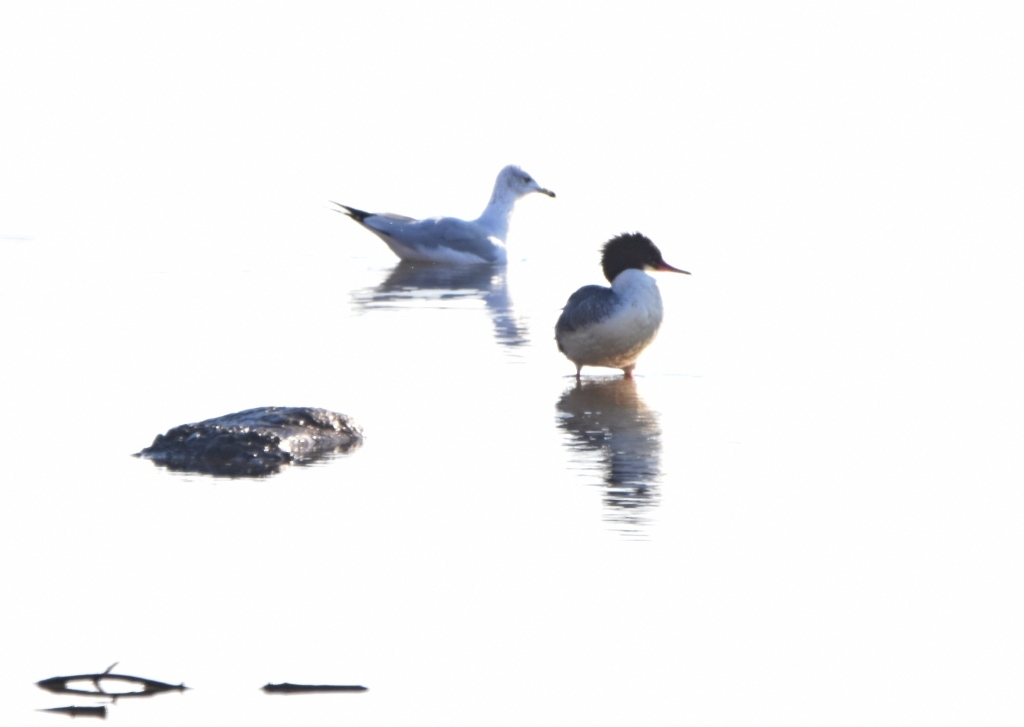
26 November 2022
This week Charity Kheshgi and I saw ring-billed gulls (Larus delawarensis), a common merganser (Mergus merganser) and a few pied-billed grebes (Podilymbus podiceps) at Duck Hollow. All three species visit the Monongahela River in November when freshwater freezes up north.
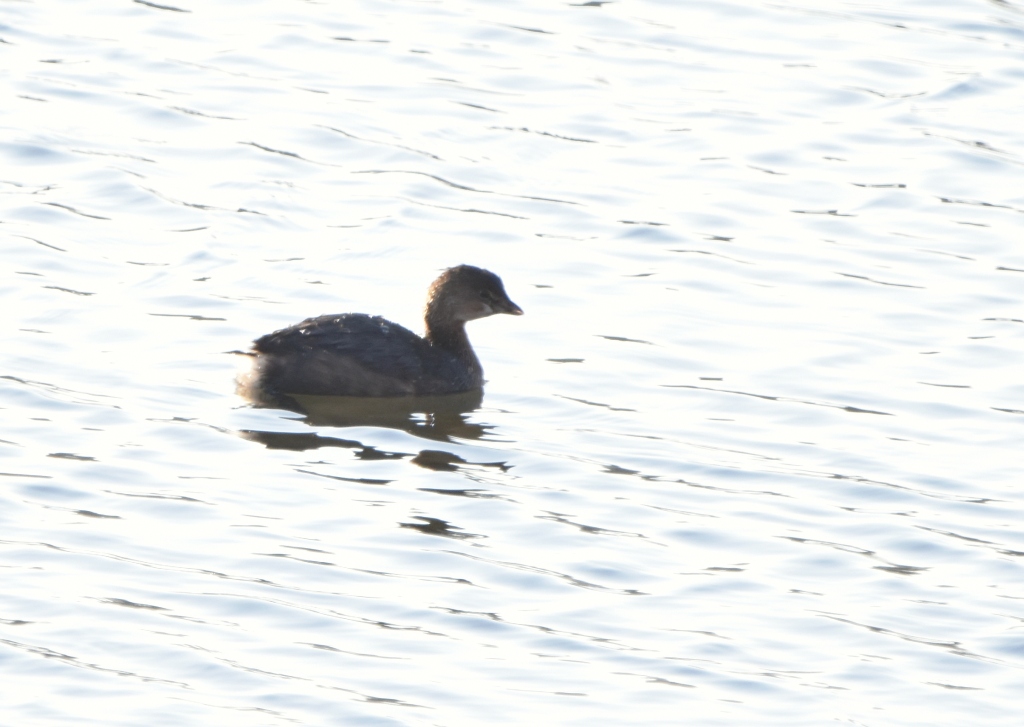
The common merganser gave us an opportunity to mentally compare her field marks to a similar bird. Here are some tips.
Female common and red-breasted mergansers are so similar that it takes some practice to tell them apart. Charity’s photos show the common merganser’s two unique field marks:
- A sharp demarcation between dark head versus white breast / gray back.
- A sharply defined white under-chin.
Notice the common merganser field marks in three photos.
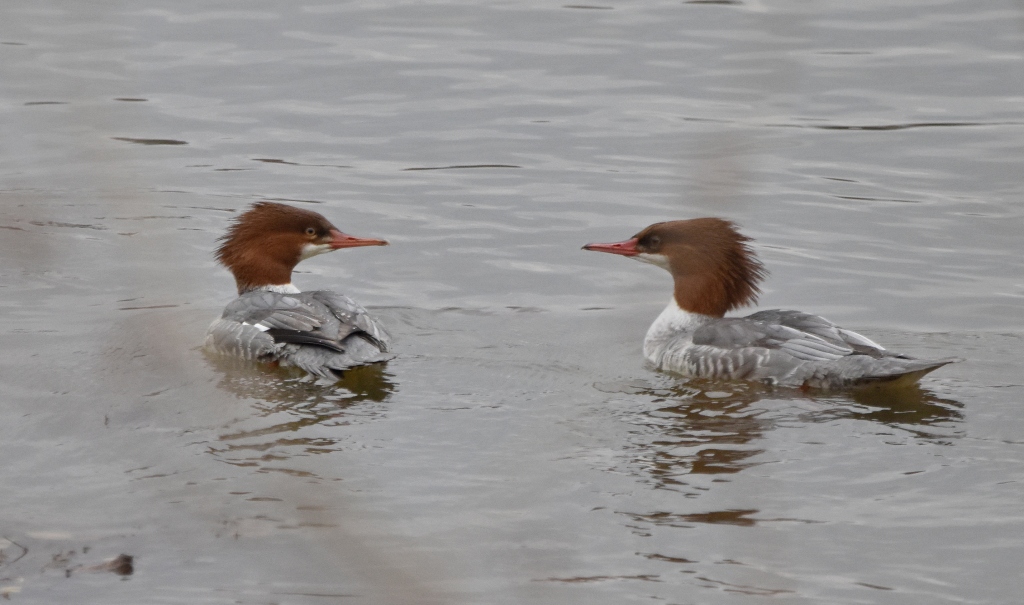
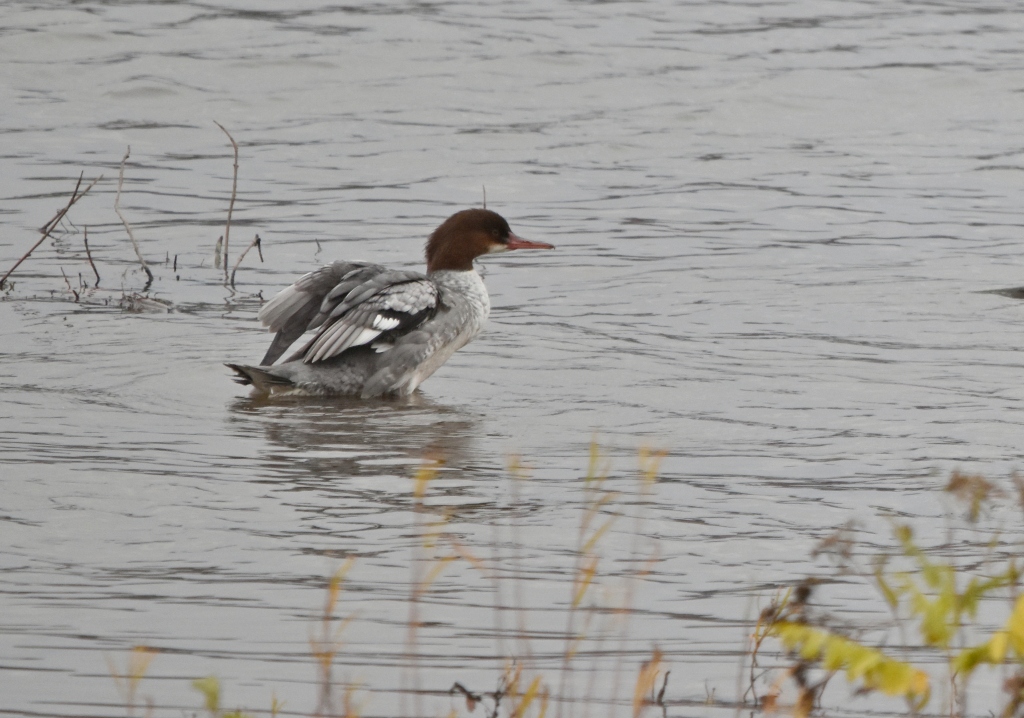
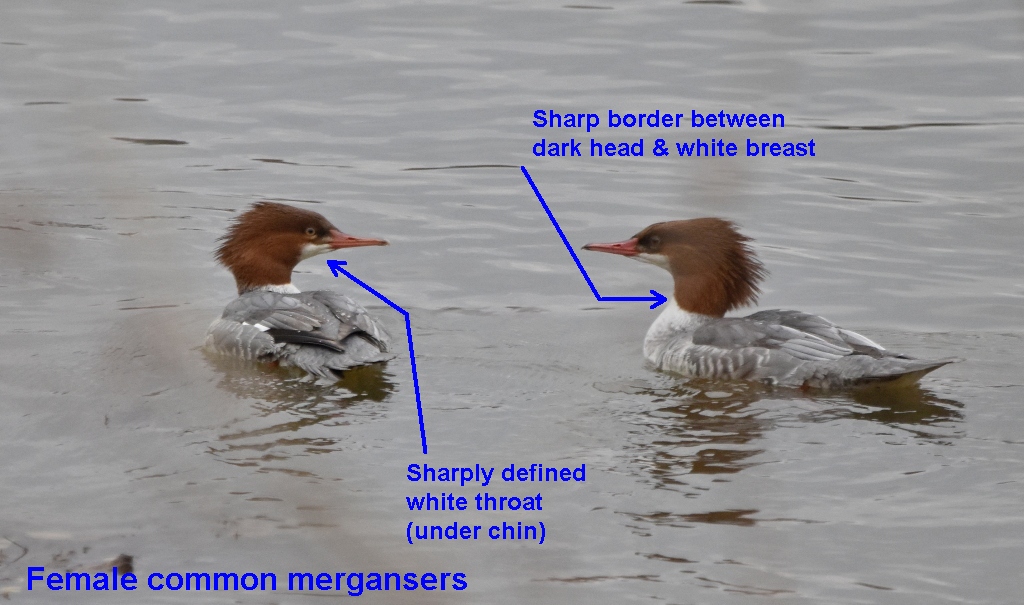
Female red-breasted mergansers (Mergus serrator) lack those sharp lines. The colors blend from one to the other.
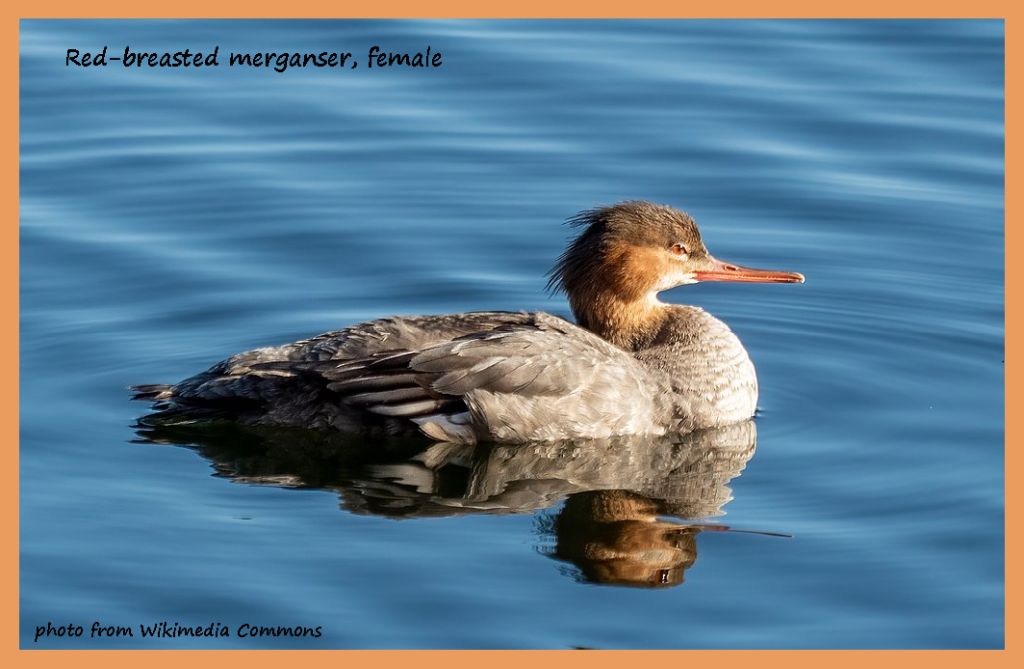
Note that the presence of a head crest is not a reliable difference between the two; both can display it.
So here’s a quiz: Which species is in the photo below? Are these common or red-breasted mergansers?
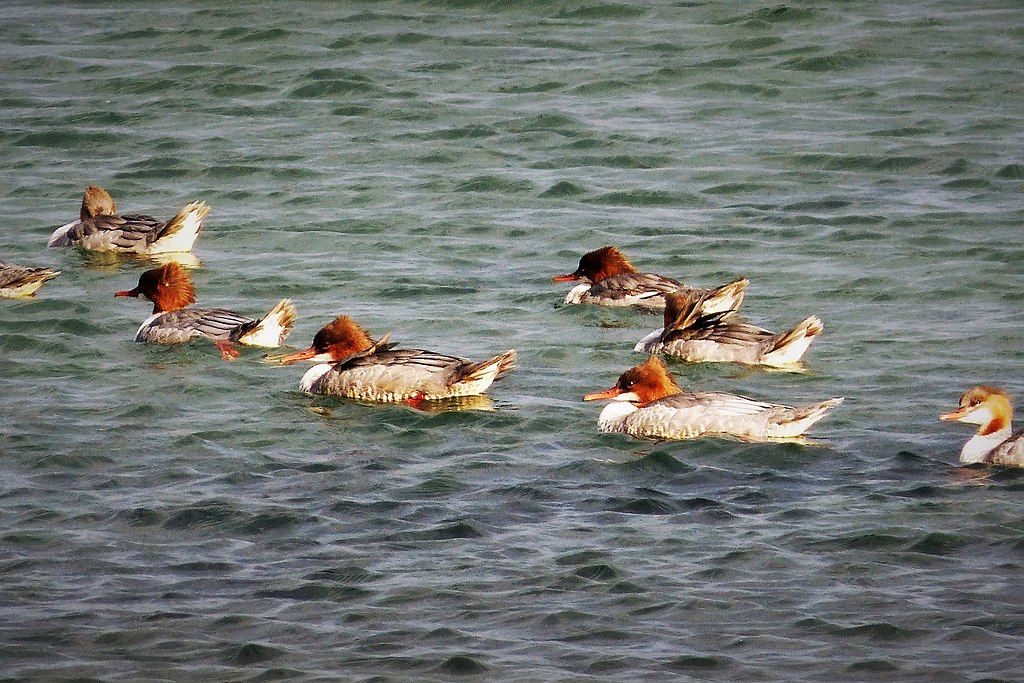
p.s. Location, location, location! Of the two species, common mergansers are inland birds more likely in Pittsburgh in November. Red-breasted mergansers concentrate at the coasts and Great Lakes in winter.
(photos by Charity Kheshgi and red-breasted mergansers from Wikimedia Commons)
What’s the best time of day to go?
I have heard that to see the most waterfowl at Duck Hollow go there just after dawn or just before sunset. But I never manage to get there at those times.